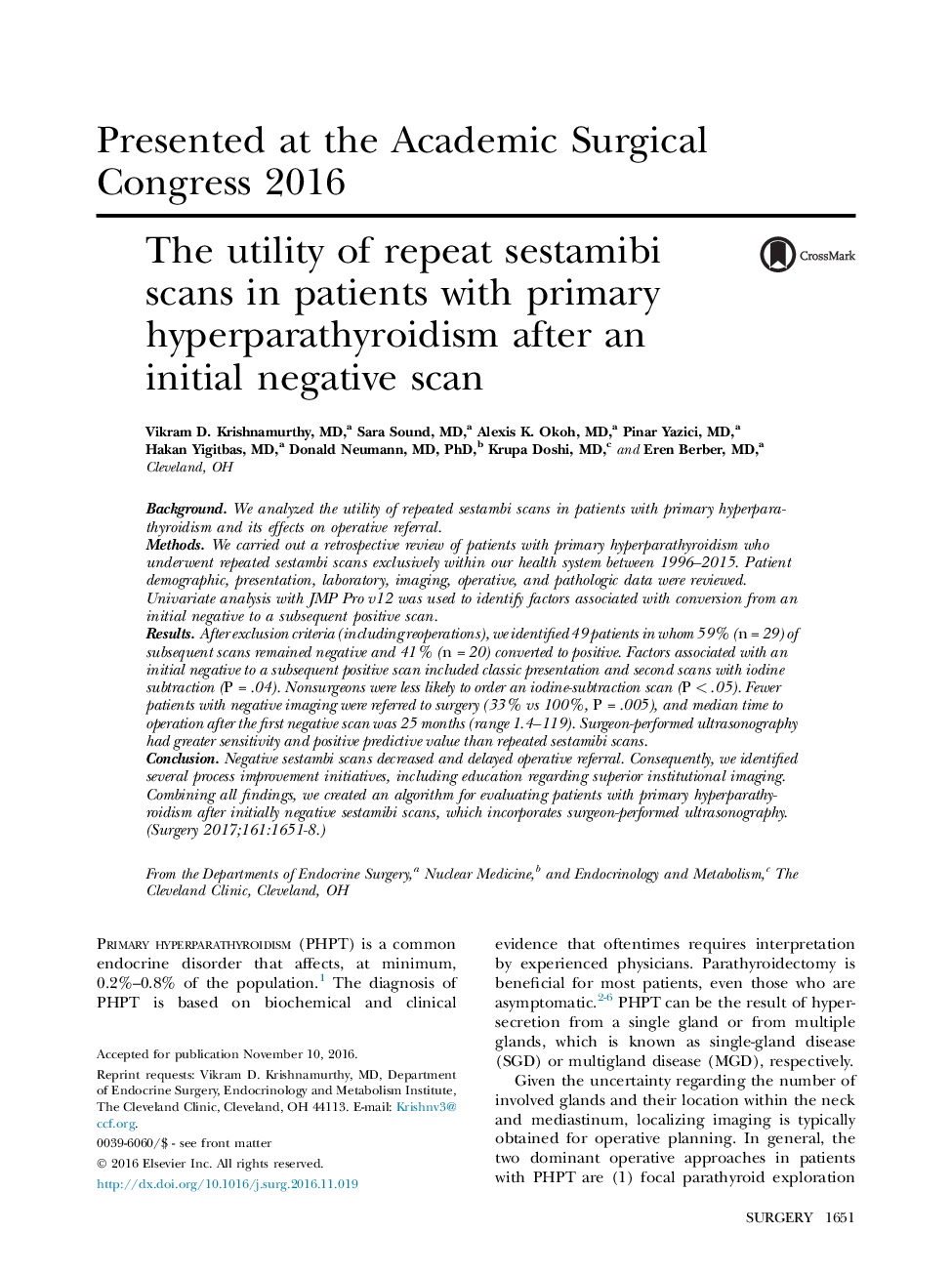| Article ID | Journal | Published Year | Pages | File Type |
|---|---|---|---|---|
| 5734786 | Surgery | 2017 | 8 Pages |
BackgroundWe analyzed the utility of repeated sestambi scans in patients with primary hyperparathyroidism and its effects on operative referral.MethodsWe carried out a retrospective review of patients with primary hyperparathyroidism who underwent repeated sestambi scans exclusively within our health system between 1996-2015. Patient demographic, presentation, laboratory, imaging, operative, and pathologic data were reviewed. Univariate analysis with JMP Pro v12 was used to identify factors associated with conversion from an initial negative to a subsequent positive scan.ResultsAfter exclusion criteria (including reoperations), we identified 49 patients in whom 59% (n = 29) of subsequent scans remained negative and 41% (n = 20) converted to positive. Factors associated with an initial negative to a subsequent positive scan included classic presentation and second scans with iodine subtraction (P = .04). Nonsurgeons were less likely to order an iodine-subtraction scan (P < .05). Fewer patients with negative imaging were referred to surgery (33% vs 100%, P = .005), and median time to operation after the first negative scan was 25 months (range 1.4-119). Surgeon-performed ultrasonography had greater sensitivity and positive predictive value than repeated sestamibi scans.ConclusionNegative sestambi scans decreased and delayed operative referral. Consequently, we identified several process improvement initiatives, including education regarding superior institutional imaging. Combining all findings, we created an algorithm for evaluating patients with primary hyperparathyroidism after initially negative sestamibi scans, which incorporates surgeon-performed ultrasonography.
